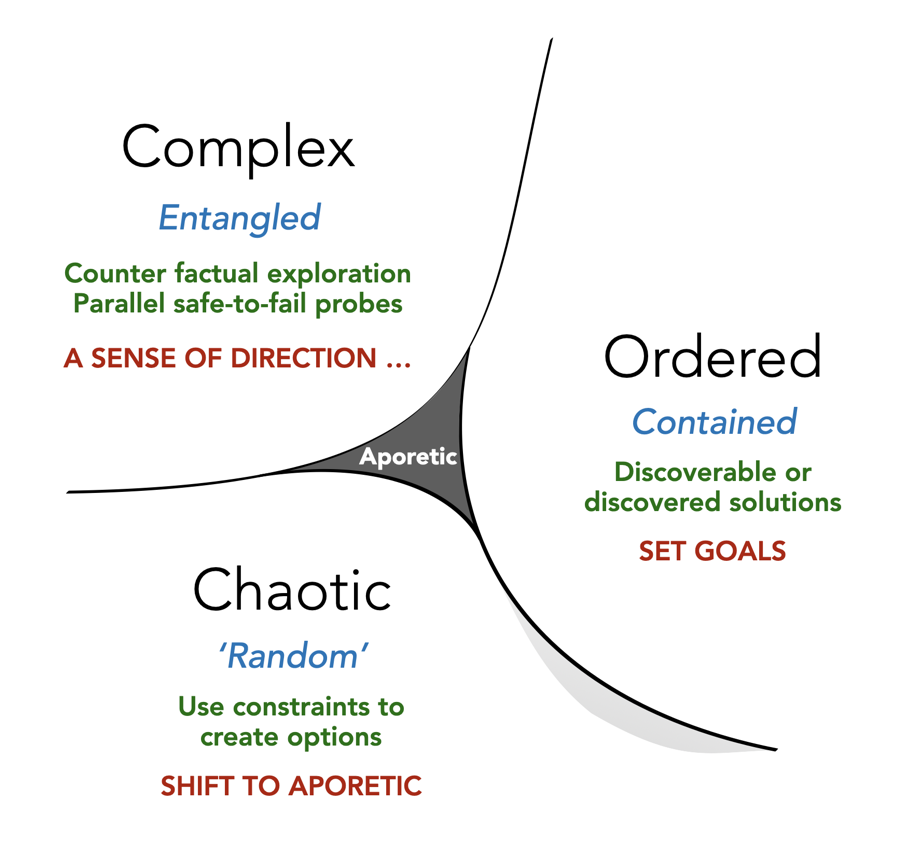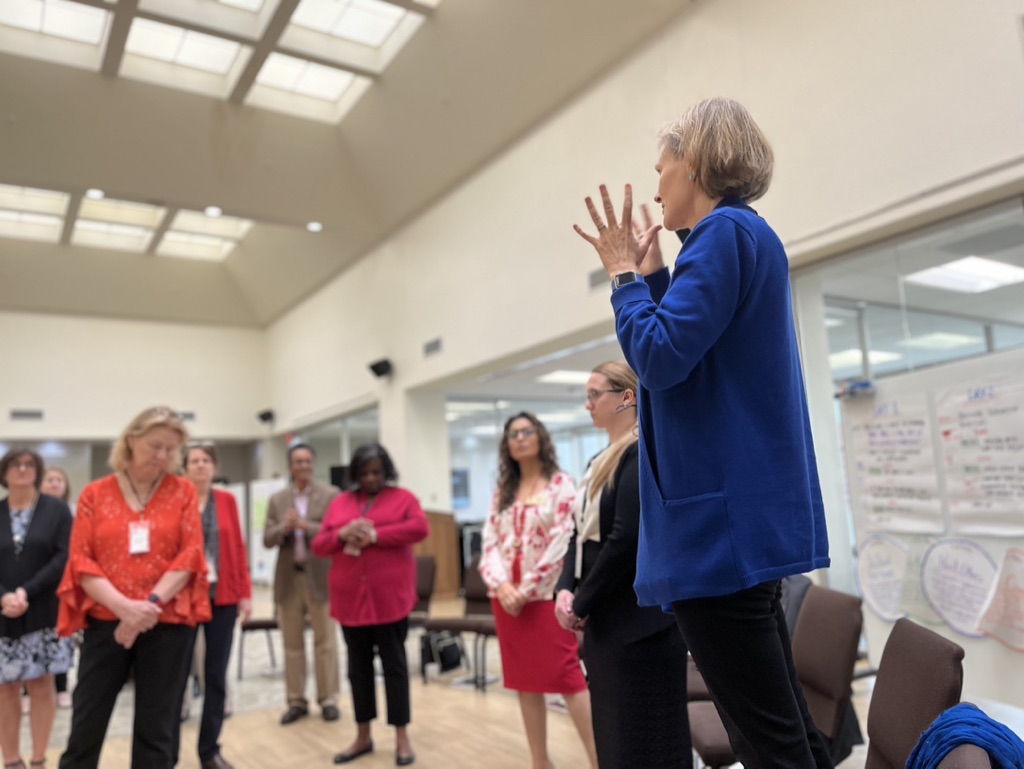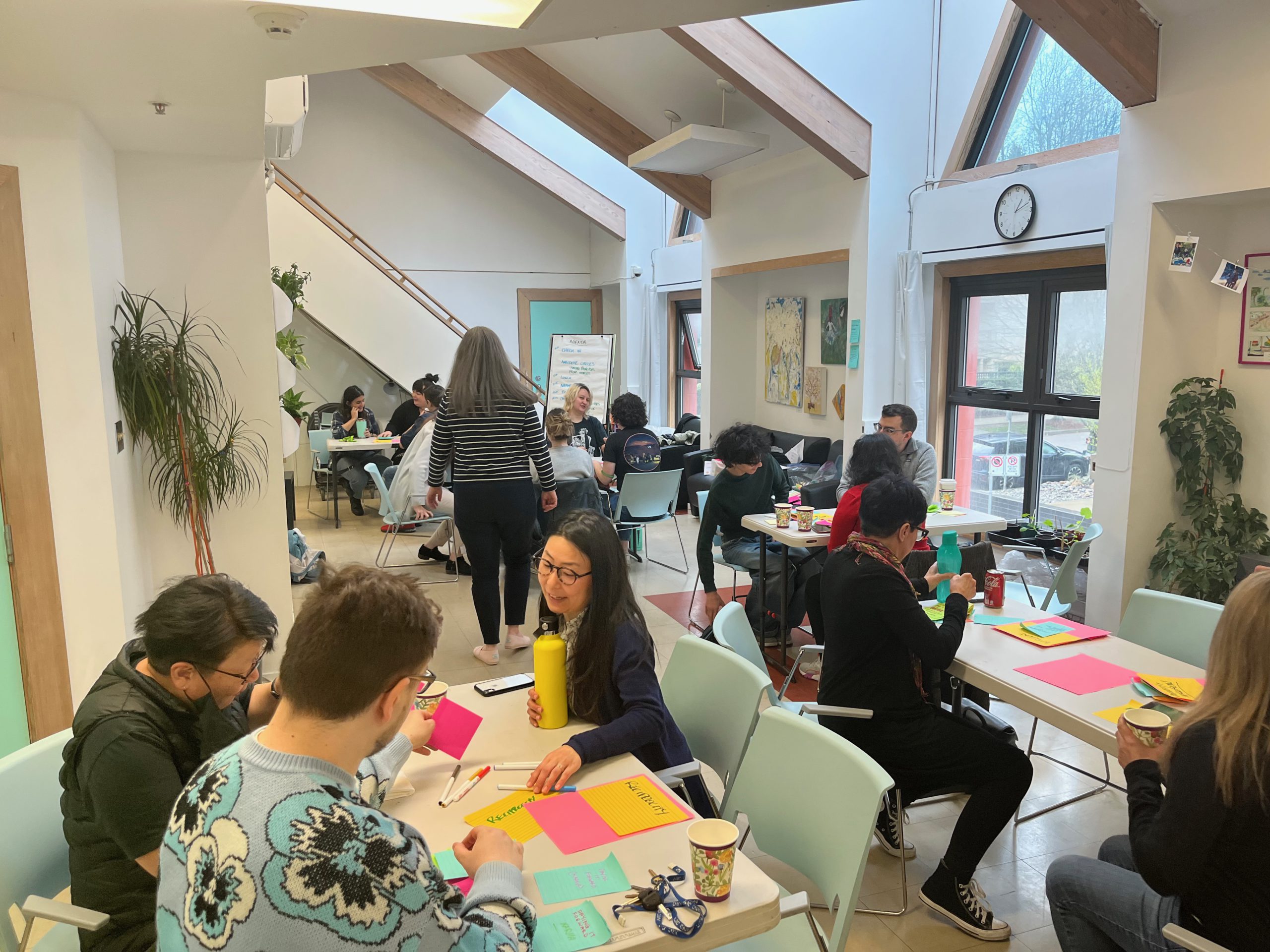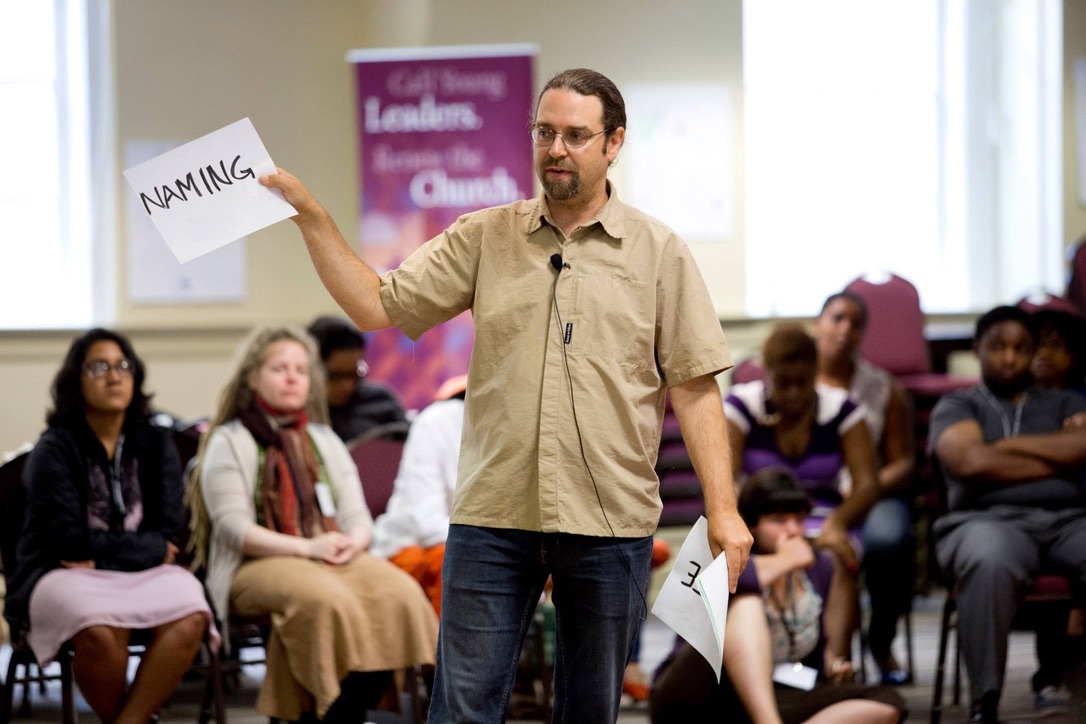
The three-domain version of Cynefin, originally published on Dave Snowden’s blog. I’m trying to organize my thoughts on containers, complexity and constraints that span a couple of decades of work and grounded theory. In this post, I want to lay out how I see these phenomena in the context of anthro-complexity, largely articulated by Dave Snowden, with implications for complex facilitation, or what we in the Art of Hosting community call “hosting.” I’ll lay out some theory first that I’m working on, link it to facilitation and then share a case study of a recent meeting I hosted to demonstrate …

Someone asked me the other day about how to use constraints in facilitation and I thought I’d jot some quick thoughts down here. Let’s start using terms from Cynefin. Group work falls on a scale between ordered tasks and unordered tasks (or complicated and complex). The first question I ask myself in designing a container for facilitation is, “how much emergence is desired in this field?” In most of my work, I’m working in highly emergent situations, but for folks working around issues like safety or legal issues, there may be a prescribed outcome that the group needs to work …

A few months ago, I was immersed in teaching complexity within the framework of the Art of Participatory Leadership program (AoPL). Essentially, AoPL is the application of the Art of Hosting within leadership contexts, extending beyond traditional facilitation and hosting scenarios. With a strong emphasis on personal practice and the use of complexity tools, AoPL encourages a deeper exploration of the connections between the Four Fold Practice, complexity, and dialogic containers – topics I’d previously addressed in my chapter for the book ‘Dialogic Organizational Development‘. My recent revisit to these subjects has sparked fresh insights. In one of these sessions, …

Four things conspiring here today. So before you dive into this post, go play Horde of the Flies at Complexity Explorables. Play with the sliders. Find a way to lock all the dots in one super stable state. Find a way to ensure endless randomness. Find a way to have the dots self-organize such that patterns emerge, persist for a while, and then change. Play with trying to control the system. See if you can get desired results. Now, what’s going on here? There is a relationship between organization and self-organization. Systems self-organize within constraints. Without constraints, anything is possible, …

That’s me, teaching something about living and dying systems from a decade ago. Years ago, I worked on a team with a client at a large US Foundation. We were planning a participatory process for a big stream of their work, and they were nervous. Large-scale participatory group methods were new to them, and lots of the leaders were nervous about losing control. That’s not uncommon, but the one thing that stuck with me was a line that came from our direct project lead. He said, “I don’t mind the highly participatory nature of the work, and I don’t worry …

